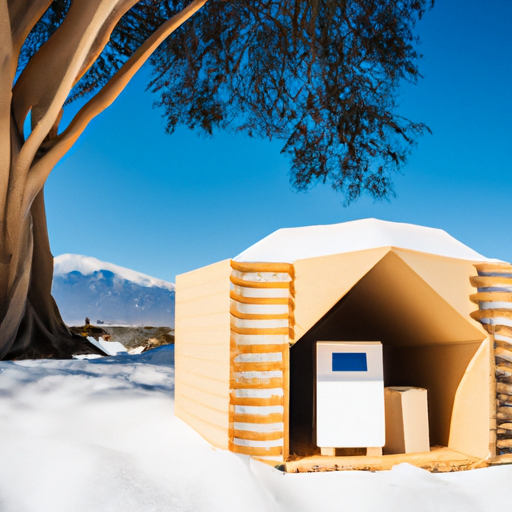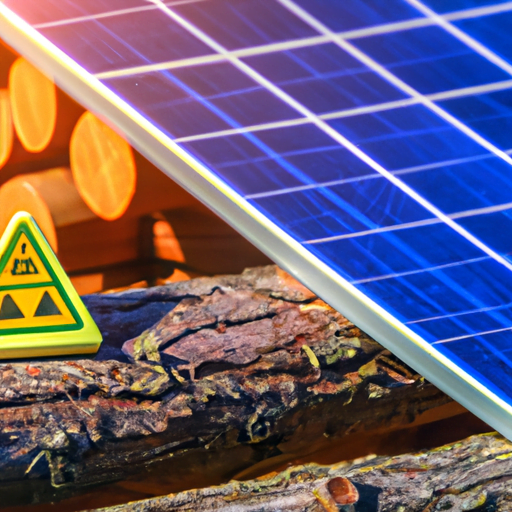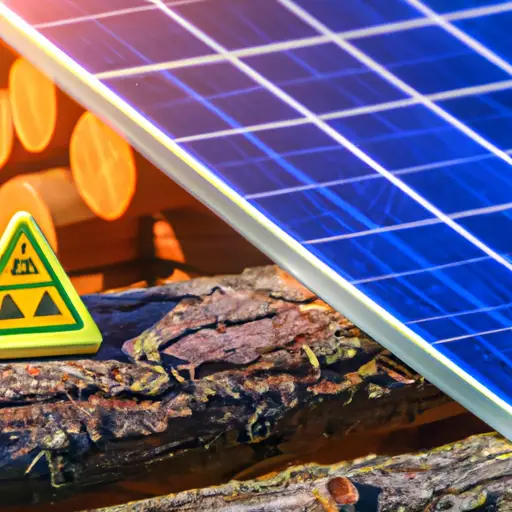Have you ever wondered what it’s like to live off-grid? You know, completely self-sufficient, without relying on public utilities like electricity and water? Well, if you’re curious about the difference between on-grid and off-grid living, you’ve come to the right place. In this article, we’ll explore the ins and outs of living off-grid, and shed some light on why some people choose this alternative lifestyle.
Living off-grid simply means living independently from public utilities. It means generating your own electricity, sourcing your own water, and possibly even growing your own food. This lifestyle is often associated with a desire for self-sufficiency and a desire to reduce one’s carbon footprint. When you live off-grid, you are not dependent on the power grid for electricity, which can give you more control over your energy consumption and potentially save you money in the long run.
On the other hand, living on-grid means having access to public utilities such as electricity, water, and gas. This is the more traditional way of living for most people, as it is convenient and requires minimal effort to access these resources. However, living on-grid also means being subject to price fluctuations and potential disruptions in service. It’s important to note that both on-grid and off-grid living have their advantages and disadvantages, and the choice ultimately depends on your personal preferences, values, and circumstances.
In our upcoming article, we’ll dive deeper into the differences between on-grid and off-grid living. We’ll discuss the challenges and benefits of each lifestyle, and provide you with some practical tips if you’re considering making the switch. So stay tuned and get ready to embark on a journey to learn more about on-grid and off-grid living.

Understanding the Difference Between On-Grid and Off-Grid Living
In today’s modern world, there is an increasing interest in living a more sustainable and self-sufficient lifestyle. Two popular options that many people consider are on-grid and off-grid living. Each of these options comes with its own set of benefits and challenges, and it’s important to understand the differences between the two before deciding which path to take.
Introduction to On-Grid Living
On-grid living refers to living in a home that is connected to the traditional power grid. This means that you receive electricity from a utility company and are able to enjoy the conveniences that come with it. You have access to reliable and consistent power for heating, cooling, lighting, and other electrical appliances. Additionally, you have access to municipal water and sewer systems, as well as internet and other essential services.
Benefits of On-Grid Living
Living on-grid offers numerous benefits. First and foremost, you have access to a reliable source of electricity. This means that you don’t have to worry about power outages or the limitations that come with off-grid alternatives, such as relying on generators or solar panels. You can simply flip a switch and enjoy the comforts of modern living.
On-grid living also provides access to essential services. Municipal water and sewer systems ensure that you have clean and safe water running into your home, as well as a reliable way to dispose of waste. Additionally, being connected to the internet allows for easy communication, access to online resources, and entertainment options.
Challenges of On-Grid Living
While on-grid living offers many benefits, it’s not without its challenges. One of the major challenges is the reliance on external infrastructure and services. When you depend on the power grid, you are at the mercy of utility companies and their maintenance schedules. Power outages can occur due to various reasons, and you may find yourself without electricity, especially during natural disasters or in remote areas.
Another challenge is the cost associated with on-grid living. Utility bills can be quite expensive, especially during peak usage seasons. Additionally, you may be subject to fluctuations in energy prices, which can impact your monthly expenses. Moreover, reliance on the grid means that you have limited control over your energy source and its environmental impact.
Introduction to Off-Grid Living
Off-grid living, on the other hand, means living in a self-sufficient manner without relying on external power grids or municipal services. It involves generating your own electricity, collecting and storing water, managing waste, and meeting all your needs independently. This lifestyle often involves living in remote areas and embracing sustainable practices.
Benefits of Off-Grid Living
Off-grid living offers a range of benefits, starting with self-sufficiency and independence. By generating your own electricity through renewable sources like solar panels or wind turbines, you have control over your energy production and usage. This not only reduces your reliance on external sources but also allows you to have a smaller carbon footprint.
Living off-grid also promotes a simpler lifestyle. With limited access to modern conveniences, you’ll find yourself relying on natural resources and alternative solutions. This can lead to a greater appreciation for nature, a deeper connection with the environment, and a reduced consumption of material possessions. Many people find this way of life to be more fulfilling and meaningful.
Challenges of Off-Grid Living
While off-grid living has its rewards, it also comes with its fair share of challenges. One of the main challenges is the initial cost of setting up the necessary infrastructure. Solar panels, wind turbines, and other off-grid systems require a significant investment upfront. However, over time, these systems can pay for themselves through energy savings and reduced utility bills.
Another challenge is the need for self-maintenance and troubleshooting. When living off-grid, you become responsible for the maintenance and repair of your own systems. This requires knowledge and skills in areas such as electrical work, plumbing, and general DIY skills. Additionally, in remote areas, it may be more difficult to access necessary resources or professional help when needed.
Comparison of On-Grid and Off-Grid Living
When comparing on-grid and off-grid living, it’s important to consider your lifestyle preferences, values, and priorities. On-grid living offers convenience, reliability, and access to essential services. It is suitable for individuals who prefer a more connected and urban lifestyle and are willing to pay for the convenience.
On the other hand, off-grid living offers self-sufficiency, independence, and a smaller environmental footprint. It is suitable for individuals who value sustainability, a simpler lifestyle, and a closer connection to nature. However, it requires a higher level of self-reliance, a willingness to invest in alternative energy systems, and the ability to adapt to a more minimalistic way of living.
Factors to Consider Before Choosing On-Grid or Off-Grid Living
Before making a decision, there are several factors to consider. Firstly, evaluate your energy needs and evaluate whether you are willing to reduce or change your energy consumption habits. Secondly, assess your financial situation and determine if you are willing and able to invest in off-grid infrastructure. Thirdly, consider your desired lifestyle and whether you value convenience or self-sufficiency more.
Additionally, it’s important to consider the location and accessibility of the property. Living off-grid in remote areas may limit your access to necessary resources and professional help if needed. Lastly, ensure that you have the skills and knowledge required to maintain and troubleshoot the off-grid systems you choose to implement.
Transitioning from On-Grid to Off-Grid Living
If you currently live on-grid but are interested in transitioning to an off-grid lifestyle, it is crucial to plan and prepare properly. Start by educating yourself about alternative energy sources and systems, such as solar power or wind turbines. Evaluate your energy consumption and identify ways to reduce it. Consider taking small steps, such as installing a rainwater harvesting system or growing your own food, to gradually move towards self-sufficiency.
You may also want to connect with like-minded individuals or join off-grid communities to gain knowledge and support. Learning from others who have already made the transition can provide valuable insights and make the process smoother.
Conclusion
In conclusion, the difference between on-grid and off-grid living lies in the level of reliance on external infrastructure and services. On-grid living offers convenience and reliability, while off-grid living promotes self-sufficiency and sustainability. Each option comes with its own set of benefits and challenges, and the decision ultimately depends on your lifestyle preferences, values, and priorities. By evaluating your needs and considering the factors mentioned, you can make an informed decision that aligns with your vision of a fulfilling and sustainable lifestyle.





